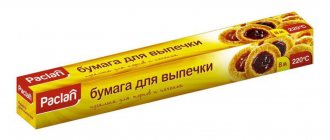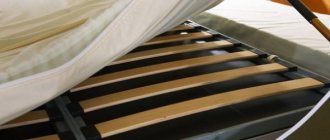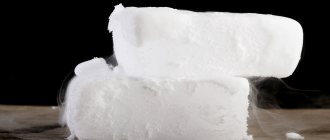Modern ovens delight with an abundance of useful functions and modes. However, understanding them is not so easy. Of course, it’s worth reading the instructions for a specific stove model, but sometimes even those instructions may not answer all your questions. In this review, we decided to find out what forced convection is in an oven and what its benefits are.
The most common designation of convection mode in an oven is the fan icon.
What is convection
Convection is the movement of heat by air currents inside the oven. During the process, cold and warm air masses are exchanged and mixed, as a result of which the temperature inside the furnace becomes the same and uniform throughout the entire volume of the enclosed space.
Depending on the mechanism of action, it is customary to distinguish between natural (free) convection, when air flows mix naturally. In this case it happens quite slowly. There is also forced convection, the principle of which is incorporated in modern ovens; this is a mode of forced circulation of warm air in the space, which is carried out thanks to special fans.
Why is convection needed?
It is difficult to overestimate the advantages of the convection mechanism in an electric oven or other device. This technology is provided in most modern household ovens. First of all, it is indispensable when baking large pieces of meat, pies, making pizza, grilled chicken or toast.
Convection promotes uniform cooking of the dish, with its help you can avoid burning in one part of the dish and inadequate baking in another. Previously, to do this, you had to constantly turn the sheet over and change the position of the dish on it. The technology allows you to cook large pieces of fish or whole meat. In addition, convection adds a number of advantages:
- rapid warming up of cold air, accordingly, saving time to obtain the desired temperature;
- the appearance of a crispy crust, the ability to dry out an overly juicy dish;
- possibility of simultaneous preparation of several dishes;
- in the presence of moist convection, food is partially steamed, retaining more beneficial properties and minerals.
How to tell if your oven has convection
If, when purchasing an oven, you did not inquire about the presence of such an important technology in it, then special signs on the control panel will help you understand this issue. On different models and on different convection type options, they may differ, but most often they are presented in the form of a fan icon, as well as indicators of its operating modes.
Principle of operation
The operating principle of convection is based on an active heat exchange process, which is achieved using a powerful fan located on the rear wall of the heating chamber. It accelerates the movement of air flows, thereby facilitating rapid heating of the oven volume.
Do you need convection in an electric oven?
Although modern models are mostly presented with a convection function, it is not difficult to find a model on the market without it. When purchasing, everyone must decide for themselves whether the convection function is needed or not.
There are some users who, even having bought an electric oven with this function, used it only a few times. If the equipment is purchased with a specific desire to please your family and loved ones every day with a variety of dishes and baked goods, then this function is of course desirable. When purchasing, additionally find out all the details of a specific model with convection from the seller, so that later you do not have to be disappointed in the product.
Advantages of Smeg convection ovens
In 1906, the Italian company Smeg introduced its first kitchen stove to the market, and already in the late 50s it released a gas model with automatic ignition, timer and fuse. The functionality of modern ovens from the Italian brand may interest even a professional chef.
Smeg produces gas and electric ovens, and all of them are equipped with a convection function. It is present even in gas-powered models, which is rare. The appliance menu provides modes in which the operation of the convector is combined with bottom heating and grilling. To cook large portions of fish and meat, you can use a spit.
The functionality of Smeg convection electric ovens is much wider. They are equipped with mechanical or touch controls, have up to 10 heating modes, and are equipped not only with a convector, but also with a ring heating element, which simplifies and speeds up the cooking process. Convection can be combined with grilling, top and bottom heating, and can be used to defrost and rise dough. In addition, many models have automatic programs, as well as the ability to program your own recipes.
Additional advantages of Smeg convection ovens are telescopic guides, easy-to-clean enamel, tangential control system, and control panel locking function. The appliances are supplied with racks, deep and standard baking trays.
If you want to buy an inexpensive Smeg oven with convection function, go to our catalog. By collaborating with the manufacturer, we can offer you very affordable prices, as well as an official guarantee.
Free and forced convection
The movement of warm air masses itself, as noted above, is convection. But depending on what prompts them to circulate and mix, it is customary to distinguish between free (natural) and forced convection. Free convection occurs on its own in many processes, and occurs without external influence. Hot air becomes lighter, causing it to rise upward. Cold, being heavier – down. The efficiency and speed of such natural convection is much lower than that of forced or forced convection.
In the case of forced convection, air masses, under the influence of, for example, a special fan, circulate and mix much faster and more efficiently. As a result, hot air flows are fairly quickly distributed evenly in a confined space.
Types of convectors
Since the appearance of the first ovens with convection function, various types and modifications of this technology have appeared. And today there are many types of them:
- A fan is the simplest type of convection. The bottom line is that when the fan blades operate, the air inside begins to actively move and mix, resulting in uniform baking of dishes.
- Fan with ring heater. This is already a more efficient system. In this case, the fan has an additional heating element, as a result of which warm air flows fill the space much faster.
- Reinforced convector. The meaning lies in the name itself. Essentially, this is the same fan, but much more powerful. With such a system, the air warms up much faster and more intensely. The food in the oven quickly becomes covered with a thin, pleasant crust on top.
- Moist convection. In this case, a steam generator is also built into the oven, due to which the air inside is actively saturated with steam. This is stewing, not frying. At the same time, the dishes turn out juicy, they retain more nutrients.
- Double convection. With this type of convection, which is also installed on some oven models, two fans are located opposite each other, each of which forces air masses to circulate at its own level. This type is most convenient when preparing several dishes at the same time.
Each of these convectors has its own advantages. For example, reinforced ones are best suited for roasting meat. Before purchasing a specific model, you should ask the seller what kind of convection system is installed in the selected model.
Violations committed by the manufacturer.
If you have fogging inside a double-glazed window, and you have tried all the above suggestions and eliminated the possible causes of fogging, but they continue to sweat, then most likely the manufacturer is to blame. If you are sure that this is a manufacturing defect of the window, you should contact the company that manufactured the window or the dealer who installed it for you, demanding replacement or elimination of the causes of fogging.
And don’t be upset in advance if your new windows start to fog up. Carefully study the microclimate of the room and try to maintain optimal humidity in the room.
Devices with convection function
Gas convection oven
Gas stoves with built-in convection ovens are popular with many practical housewives. This is primarily due to the relatively low cost of fuel. Externally, such a stove is practically indistinguishable from an ordinary modern gas stove. However, a special fan is built into the back wall of such devices.
The convector in such a stove has a number of operating features. Since in these models the heating part is located at the bottom, before putting the dish in the oven for cooking, you must first turn on the convector for a short period, and then send the dish into the oven for cooking.
The disadvantages of this type include the lack of complete sealing of the oven, since it is necessary that combustion products have a constant outlet. This ultimately leads to longer cooking times.
Electric convection oven
Some housewives wonder how necessary convection is in the oven, because it itself is a fairly powerful fryer, capable of heating up to a temperature of several hundred degrees. In fact, even such a powerful flow of warm air is not capable of ensuring ideal uniformity of its distribution, and, accordingly, uniform cooking of the dish.
Today, voluntarily abandoning the convector in the oven is not a reasonable decision. It is thanks to him that it is possible to achieve ideal uniform baking of the dish, juiciness and crispy crust on the surface. It’s no wonder that models of electric stoves with convection are the most popular among buyers today.
Grill with convection
The grill function quite often comes as part of the options of modern stoves. The grill allows you to easily and efficiently cook meat on a spit. There are two types of grill:
- Gas. In this case, there is a high-quality imitation of cooking over coals.
- Electric. Its feature is more convenient operation.
Grill and convection combine perfectly and complement each other. There are two types of grills: air grill and turbo grill. The desired mode is very simply activated by pressing the corresponding button on the control panel. The advantage of using an air fryer is the ability to obtain high-quality roasted meat with a crust.
What is convection in a microwave oven
For a long time now, the microwave oven has become an integral part of the kitchen equipment set of most families. It allows you to quickly heat up various foods and semi-finished products, and defrost foods. Microwave ovens today also use convection quite often.
Moreover, in essence it does not differ from that in a standard oven, except for the size. The fan distributes air flow inside the chamber. When a certain temperature is reached, the system automatically turns off. The use of convection in microwave ovens can significantly reduce the time of defrosting and cooking food.
Experiment No. 2. Radiation
In this experiment I wanted to show a way to transfer heat without the interaction of two bodies. The heat must be transferred to the receiver, which in turn releases it through the tube into the liquid pressure gauge. Due to the heating of the air in the elbow connected to the liquid pressure gauge, the liquid should drop.
I connected the fluid pressure gauge elbow to the heat sink. He lit the alcohol lamp and brought the heat sink to it with the light side, but at a certain distance. The fluid in the pressure gauge elbow connected to the receiver has decreased slightly. Having equalized the amount of liquid in the pressure gauge, I again brought the heat receiver to the heat source, but with the dark side. The fluid in the pressure gauge elbow connected to the receiver has decreased, but much more and faster. The air in the heat sink heated up and expanded, beginning to put pressure on the liquid in the pressure gauge elbow.
Conclusion from experience No. 2
Energy was not transferred by thermal conductivity. Between the heated body and the heat sink there was air - a poor conductor of heat. Therefore, in this case, energy transfer occurs by radiation.
Heat transfer by radiation differs from other types of heat transfer. It can be carried out even in a complete vacuum.
An important and distinctive property of thermal radiation is the equilibrium nature of the radiation. This means that if you place a body in a thermally insulated vessel, the amount of energy absorbed will always be equal to the amount of energy emitted. Some of the heat received by radiation is absorbed, and some is reflected.
Applications of radiation
The ability of bodies to absorb radiation energy differently is used in practice. Thus, the surface of balloons and airplane wings are painted with silver paint so that they are not heated by the sun.
Radiation heating of the room with special infrared radiators. This heating is more efficient than convection heating, since the rays pass freely through the air.
Radiation is used on spacecraft. Since there is no air there, there is no other way to transfer heat.
If you are close to an incandescent lamp, you can feel the heat emanating from it.
Solar panels work on the principle of radiation. The sun emits powerful heat rays. Solar panels receive heat rays and convert them into energy. Such batteries are good receivers for sunlight because their surface is dark in color and they heat up well. Such batteries are used on space stations and satellites.
Heat rays also come from computers and mobile phones.
Night-vision devices. Such devices are made of materials capable of converting thermal radiation into visible radiation. Such devices are used for shooting in complete darkness. They are able to capture different areas whose temperature differs by hundredths of a degree.
Interesting Facts
The darker the body, the better it absorbs heat. Mirror surfaces reflect heat received by radiation. An absolutely black body is a physical body that, at any temperature, absorbs all electromagnetic radiation incident on it in all ranges.
When an object reaches a high temperature, it begins to glow red. As the object is further heated, the color of its radiation changes, passing through orange, yellow, and further along the spectrum, the hotter it is, the shorter the wavelength of the radiation.
When radiation, spreading from a source body, reaches other bodies, part of it is reflected, and part is absorbed by them. When absorbed, the energy of thermal radiation is converted into the internal energy of bodies, and they heat up.
Snakes perfectly perceive thermal radiation, but not with their eyes, but with their skin. Therefore, even in complete darkness they are able to detect warm-blooded prey. Rattlesnakes and Siberian copperheads respond to temperature changes of up to a thousandth of a degree.
80 percent of body heat is radiated by the human head.
If not for the properties of radiation, the earth would have frozen. Since the earth constantly emits heat rays into infinite space.
The eyes of a cockroach sense temperature fluctuations of a hundredth of a degree. Every square meter of the earth's surface receives about 1 kW of solar thermal energy, which is enough to boil a kettle in a matter of minutes.
Convection mode indicators
The main differences between wet convection, enhanced and dry
- Wet circulation. With this technology, in addition to the usual heating of the air, it is also actively saturated with moisture. This makes this convection ideal for steaming dishes.
- Increased circulation. The main detail in this case is a reinforced powerful fan. Perfect for those cases when you need to achieve a crispy crust on the surface of the dish.
- Forced dry circulation. In this case, the oven contains several fans, which also often have additional heaters.
The most useful programs
- Normal convection. Used for heating dishes, preparing dough before baking, drying herbs, berries and fruits.
- Convector, bottom heater and grill. This is the optimal mode for cooking semi-finished products.
- Convector and bottom heater. This mode is ideal for baking pizza, pies, and bread.
- Turbo grill. When this mode is turned on, the top heater, convector and grill are activated immediately. Good for cooking large pieces of meat.
All of these modes, except regular convection, should be used for a baking tray set at the same level.
Double convection
There are also models on the market with two convectors installed simultaneously. The main brand that produces such ovens is Samsung. The presence of two fans allows you to distribute and warm up the air masses much more efficiently.
Before purchasing equipment with this function, you should make sure that such a choice will be justified. The presence of this function significantly increases the cost of the equipment. The choice is appropriate if you plan to regularly prepare dishes in this mode.
Application of humid convection
Ovens in wet convection mode are used for steaming various meat, vegetables and other dishes. The design of ovens with a similar mode consists of the following elements: a fan, a special container for water and a generator that converts water into steam.
Defects during installation
If there are many plastic windows in the house, but only one fogs up, the reason is most likely a defect in manufacturing or installation. But it should be remembered that such cases are extremely rare. Therefore, before making claims to the manufacturing company or installation specialists, it is necessary to exclude the possibility of other causes of window fogging.
If moisture accumulates inside the glass chambers, this is clearly a manufacturing defect or a violation of the window seal due to improper installation. In this case, the manufacturer or provider of window installation services is obliged to dismantle the defective double-glazed windows and install new ones at its own expense. But such situations are extremely rare. Low-quality products can cause irreparable damage to the company's authority, which is completely unacceptable in the conditions of fierce competition in the modern window market, when each company, in order to stay afloat, must be very responsible about its image.
Read how to choose the right plastic windows.
How to use convection
All oven manufacturers describe in detail the process of using this function in a specific model. But as a rule, the algorithm is similar.
When to turn on convection in the oven
When using equipment with this function, no preheating is required, with the exception of models that run on gas or when heating frozen foods.
How to turn it on
Please note that when using a convector, food is cooked at lower temperatures than usual. When switching on, you need to make adjustments of approximately 25 °C.
How to turn off convection
If the mode is not needed, you can simply disable it. To do this, you need to turn the knob to a special indicator. It is different for each specific model and is described in detail in the instructions for use.
So why do plastic windows actually sweat? Let's figure it out
To begin with, we list the “symptoms that will help make the correct “diagnosis” of a foggy plastic window:
- double-glazed windows are dry during the day, but condense only in the morning and evening;
- windows sweat only in the cold season or when the temperature drops sharply;
- in the house only one window is covered with condensation, while all the others are in a normal “dry” state;
- glasses always sweat: at any time of the year or day (an extremely rare case)
A short excursion into bygone times will help us clarify the picture. Let's remember how old wooden windows were designed, which almost never sweated. They were double. Between the outer and inner windows there was a fairly decent air cushion, which “smoothed out” the difference between the external and internal temperatures.











